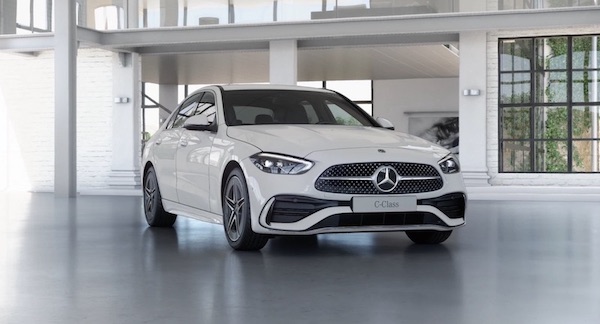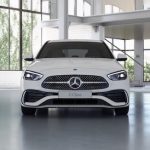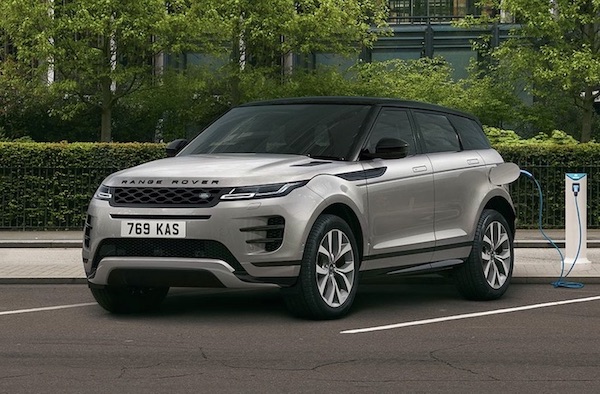Electric Cars: The Basics
For those of you new to zero-emission electric driving, we recommend a read of the following articles:
Sign up to the newsletter
The Mercedes-Benz C Class Saloon PHEV
Mercedes-Benz, simply known as Mercedes, is a leading global luxury automative manufacturer based in Germany. The company is headquartered in Stuttgart and is famed for its high quality passenger vehicles, to include the Mercedes-Maybach.
However, the company is also a leader in manufacturing commercial vehicles, to include the plug-in Mercedes eSprinter commercial EV and the plug-in Mercedes eVito electric van.
Mercedes-Benz EQ is the sub-brand used by the company for its portfolio of battery-electric vehicles (BEVs), plug-in hybrid electric vehicles (PHEVs) and mild hybrids. The pure electric cars are branded as EQ, while the PHEVs are branded as EQ Power. The mild hybrid vehicles are branded as EQ Boost. The PHEV portfolio includes:
- Mercedes A-Class Hatchback PHEV
- Mercedes A-Class Saloon PHEV
- Mercedes B-Class Hatchback PHEV
- Mercedes E-Class Saloon PHEV
- Mercedes E-Class Estate PHEV
- Mercedes S-Class Saloon PHEV
- Mercedes CLA Coupé PHEV
- Mercedes CLA Shooting Brake PHEV
- Mercedes GLA SUV PHEV
- Mercedes GLC SUV PHEV
- Mercedes GLC Coupé PHEV
- Mercedes GLE SUV PHEV
- Mercedes GLE Coupé PHEV
The Mercedes-Benz C Class compact premium saloon is currently in its fifth generation. It was first introduced in 1993. Since then, the saloon has gained popularity with company-car drivers. The Mercedes C Class is also available as a plug-in hybrid electric vehicle (PHEV).
The latest C Class plug-in electric car has much to offer those keen on migrating to lower mission electric driving, but keen on a PHEV as a first step. The C Class PHEV has a 25.4 kWh onboard EV battery, with a claimed zero-tailpipe emission range up to 111 km (WLTP certified). This is certainly impressive and above average compared to the pure electric range on offer from an average PHEV.
Of course, the real-world electric range will depend on a number of factors, to include: driving profile, speed, passenger load, weather and road condition etc. Assuming a 90 km electric range is more realistic and establishes the C Class PHEV as class-leading. The plug-in hybrid can be leveraged for both city and motorway driving. There is significant scope to take advantage of pure electric driving with this PHEV.
The EV also benefits from regenerative braking to increase the zero-emission e-range. Do keep in mind that driving the PHEV on the electric mode will result in lower tailpipe emissions (13g CO2/km) and cost savings. Of course, when the PHEV is driven on the pure electric mode, the tailpipe emissions are zero!
Mercedes claims a fuel economy up to 0.6 l/100km. Like real-world electric range, the real-world fuel economy will be impacted by a number of factors. Nevertheless, the EV offers class-leading efficiency. The key is to use the e-mode on a regular basis. The more the usage, the better!
The EV has a 11 kW (3 phase) onboard charger. As most homes in India are limited to single-phase power supply, taking advantage of the 3-phase onboard charger will be a challenge for home charging. Having said that, charging the electric car via a dedicated residential EV charger, should have the EV fully charged in 3 hours 30 minutes.
Of course, there is an opportunity to take advantage of 3-phase workplace charging. The EV does not offer DC charging for all markets. For Europe, it offers DC charging.
The rear-wheel drive Mercedes C Class plug-in hybrid pairs a 2.0-litre (4 cylinder) combustion petrol engine with an electric motor (95 kW). The 9-speed automatic transmission C300e PHEV delivers a combined system output up to 313 hp (550 Nm torque). The EV can achieve 0-100 km/h in 6.1 seconds. The petrol plug-in hybrid has a top speed up to 245 km/h.
As can be expected from Mercedes, the C 300e PHEV has a luxurious interior and technology-laden, to include: Mercedes-Benz User Experience (MBUX) – controlled via voice or touch input, the innovative infotainment system can over time even predict personal habits thanks to artificial intelligence.
Other standard specifications include, active brake assist, blind spot assist, wireless charging, ambient lighting (staged – 64 colours), KEYLESS-GO starting function and high-resolution multimedia colour display.
The PHEV is practical for families and can comfortably seat adults in the rear seats (ample legroom and headroom). The boot space for the EV is smaller than the conventional internal combustion engine (ICE) variant, due to the EV battery. Nevertheless, the 315 litres available is practical.
The Mercedes C Class PHEV saloon offers a compelling proposition for families and companies keen to migrate to electric driving! Bottom-line, electric driving is good for the environment and the wallet!
| PROS | CONS |
|---|---|
| Impressive pure electric range | DC charging not available for all markets |
| Low tailpipe emissions | Boot space impacted by onboard EV battery |
| Good fuel efficiency for its class | Top trim is expensive |
The Mercedes-Benz C Class Saloon PHEV (credit: Mercedes)
| At A Glance | |
|---|---|
| EV Type: | Plug-In Hybrid Electric Vehicle (PHEV) |
| Vehicle Type: | Saloon |
| Engine: | Petrol-Electric |
| Available In India: | No |
| Variants (1 Option) |
|---|
| Mercedes-Benz C 300 e (from ₹ N/A) |
| EV Battery & Emissions | |
|---|---|
| EV Battery Type: | Lithium-ion |
| EV Battery Capacity: | Available in one battery size: 25.4 kWh |
| Charging: | DC charging not available. Onboard charger 11 kW AC (10%-100%: 2 hrs) |
| Charge Port: | Type 2 |
| EV Cable Type: | Type 2 |
| Tailpipe Emissions: | 13g (CO2/km) |
| Warranty: | 6 years or 100,000 km |
| Charging Times (Overview) | |
|---|---|
| Slow charging AC (3 kW – 3.6 kW): | 6 – 12 hours (dependent on size of EV battery & SOC) |
| Fast charging AC (7 kW – 22 kW): | 3 – 8 hours (dependent on size of EV battery & SoC) |
| Rapid charging AC (43 kW): | 0-80%: 20 mins to 60 mins (dependent on size of EV battery & SoC) |
| Rapid charging DC (50 kW+): | 0-80%: 20 mins to 60 mins (dependent on size of EV battery & SoC) |
| Ultra rapid charging DC (150 kW+): | 0-80% : 20 mins to 40 mins (dependent on size of EV battery & SoC) |
| Tesla Supercharger (120 kW – 250 kW): | 0-80%: up to 25 mins (dependent on size of EV battery & SoC) |
- Note 1: SoC: state of charge
| Dimensions | |
|---|---|
| Height (mm): | 1442 |
| Width (mm): | 2033 |
| Length (mm): | 4751 |
| Wheelbase (mm): | 2865 |
| Turning Circle (m): | 11.07 |
| Boot capacity (L): | 315 |
| C 300e | |
|---|---|
| EV Battery Capacity: | 25.4 kWh |
| Pure Electric Range (WLTP): | 111 km |
| Electric Energy Consumption (kWh/100km): | 17.9 |
| Fuel Consumption (l/100km): | 0.8 – 0.6 |
| Charging: | DC charging not available. Onboard charger 11 kW AC (10%-100%: 2 hrs) |
| Top Speed: | 245 km/h |
| 0-100 km.h: | 6.1 seconds |
| Drive: | Rear-wheel drive (RWD) |
| Electric Motor (kW): | 95 |
| Max Power (hp): | 313 (system output) |
| Torque (Nm): | 550 (system output) |
| Transmission: | Automatic |
| Seats: | 5 |
| Doors: | 4 |
| Kerb Weight (kg): | 2,080 |
| Colours: | 11 |
| NCAP Safety Rating: | Five-Star |
BEVs Vs PHEVs: Which Is Better?
Both, battery-electric vehicles (BEVs) and plug-in hybrid electric vehicles (PHEVs) have significant advantages over conventional internal combustion engine (ICE) petrol and diesel vehicles. However, when BEVs and PHEVs are compared together, the narrative is not as black & white. Both types of electric vehicles (EVs) have pros and cons, and depending on the buyer circumstances, one type of EV will be more appropriate.
Plug-in hybrid electric cars have played an important role in encouraging drivers to migrate to electric driving. ‘Familiarity’ and ‘range security’ offered by plug-in hybrid vehicles, have been key attributes in propelling buyers to migrate to electric driving. A PHEV in many respects is very similar to driving a conventional petrol/ diesel car, except for the introduction of an electric mode, regenerative braking and EV charging.
As an example, the Land Rover Range Rover Evoque Plug-In Hybrid SUV, uses both, a petrol engine and an electric motor to propel the vehicle. The electric motor is driven by an onboard EV battery, which is charged via an external EV charging station. For those keen on ‘familiarity’, a PHEV, despite the addition of an electric motor, is very similar to driving a conventional petrol or diesel car.
The other impediment to migrating to EVs is range anxiety. In a PHEV there is no fear about an ’empty’ EV battery, as the vehicle can still be driven on the internal combustion engine (ICE). Bottom-line, for those in India keen to use an EV, but lack EV charging infrastructure and need to travel long distances on a regular basis, a plug-in hybrid electric car is more appropriate than a BEV.
Pure electric cars (BEVs) have come a long way over the past decade, since the introduction of the all-electric Nissan Leaf in 2010. In particular, in regards to increased EV range. Pure electric cars like the Tesla Model 3 can offer a range up to 360 miles (the first generation Leaf offered a range up to 73 miles). The Model 3 is not the only EV that can offer a long electric range. In fact, many of the recent EVs introduced have a range well over 200 miles on a full battery charge. This significant improvement in electric range has helped reduce the concern over range anxiety, enabling greater confidence in EVs.
Unlike PHEVs, pure electric cars are zero-tailpipe emission i.e. a BEV does not have a tailpipe and therefore does not pollute the air! The improvement in air quality, is one of the key advantages of choosing a BEV over a PHEV. The other key advantage is that a BEV is cheaper to drive and maintain, compared to a PHEV. This should come as no surprise as a BEV has only an electric motor/s, while a PHEV has an internal combustion engine, coupled with an electric motor. Put another way, a plug-in hybrid EV has many more moving parts and therefore more to maintain and repair overtime!
BEVs are well suited for businesses and families keen to improve local air quality and reduce the cost of driving. Of course, access to dedicated EV charging infrastructure at home and on the road is a prerequisite to owning a BEV!
While e-zoomed uses reasonable efforts to provide accurate and up-to-date information, some of the information provided is gathered from third parties and has not been independently verified by e-zoomed. While the information from the third party sources is believed to be reliable, no warranty, express or implied, is made by e-zoomed regarding the accuracy, adequacy, completeness, legality, reliability or usefulness of any information. This disclaimer applies to both isolated and aggregate uses of this information.

































